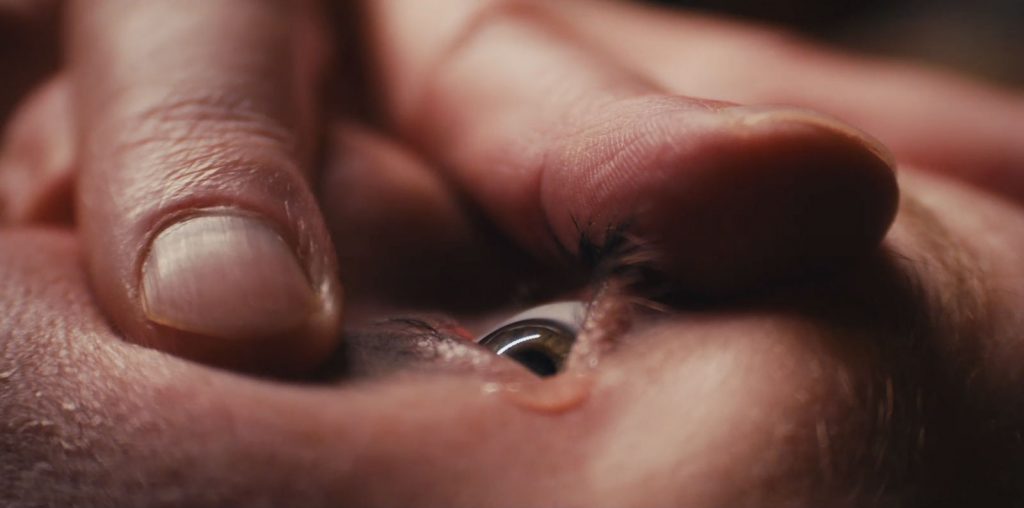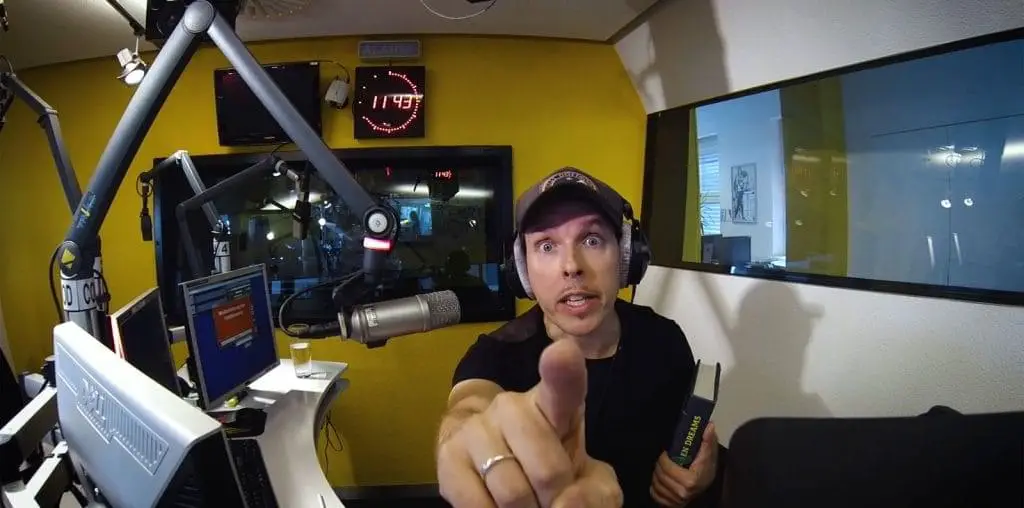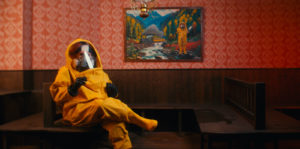
The documentary Hacking at Leaves, written, directed, and hosted by Austrian filmmaker Johannes Grenzfurthner (appearing in a full hazmat suit), is an ambitious film, to say the least. It begins with an antagonistic, gnarly avatar of Uncle Sam, played by Max Grodénchik, who demands the host tell this story. The wide-ranging scope of the film starts with an exploration of Manifest Destiny in the United States. It moves through our colonial past in the West, Navajo indigenous tribal history, and on to the history of the hacker/maker movement. The story leads up to and resolves in a maker space in Durango, Colorado, that made significant contributions to COVID relief efforts during the pandemic in the Four Corners region of the Southwest. Then we learn, again, inevitably, that no good deed goes unpunished.
This is a busy film. So much so that a viewer would benefit greatly from two trips through Grenzfurthner’s demented frenzy of a story. It all eventually does make sense, but he accelerates us through a dizzying, head-spinning cacophony of information, which is necessary for the final impact of the film to become clear. Once you’ve taken it all in, the focus point hits like a nuclear test on Navajo lands. Hacking at Leaves feels like a TED talk where the presenter is on methamphetamine, and the audience has all dropped acid. One imagines a darkened basement room with a picture wall and lines of red yarn leading from one item to the next. The film uses interviews, still photos, video clips, and dramatized scenes from history to paint the picture, with plenty of narration from Grenzfurthner.
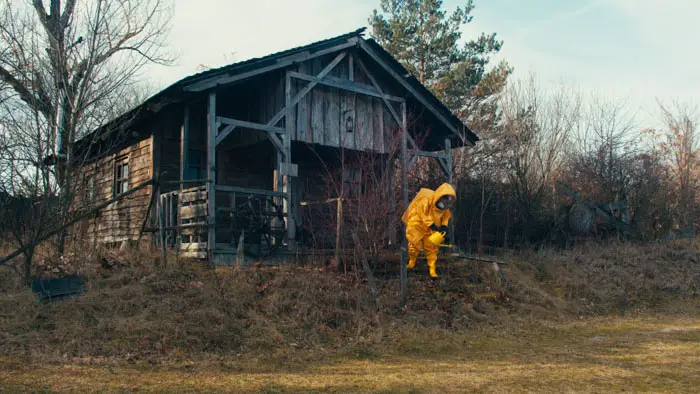
“It moves through our colonial past in the West, Navajo indigenous tribal history, and on to the history of the hacker/maker movement.”
The Navajo story is deeply disturbing, from atomic testing to disastrously polluted waterways to a population whose cultural modes and lack of medical facilities and services made the pandemic much worse than elsewhere. For a brief, golden moment, it looked like there would be a silver lining of community involvement and response. The non-conformist engineers and designers of Science Center’s MakerLab rose to the challenge and built needed PAPR protective devices. Regional hospitals used their gear and sang their praises.
The Albuquerque Journal reported on the marvel of open-source engineering and production in April 2020: “Local manufacturers and makers labs in Farmington and southwestern Colorado are building hundreds of custom-designed face shields, gowns, and other personal protective equipment for the medical center, including components for ventilators and other breathing devices…The Durango-based Powerhouse Science Center’s MakerLab has reverse-engineered an oxygen blowing device the hospital uses to provide purified air under a hood, Greenberg said. It’s delivered 51 blowing units to date.”
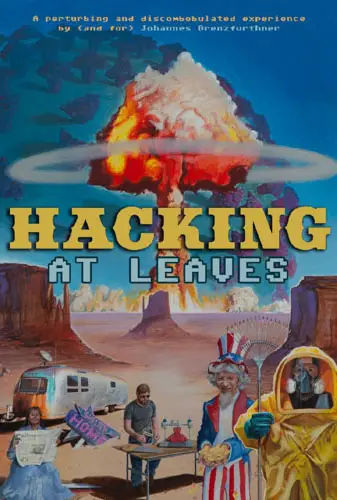
"…provides yet another example of capitalism's dismal failures."
